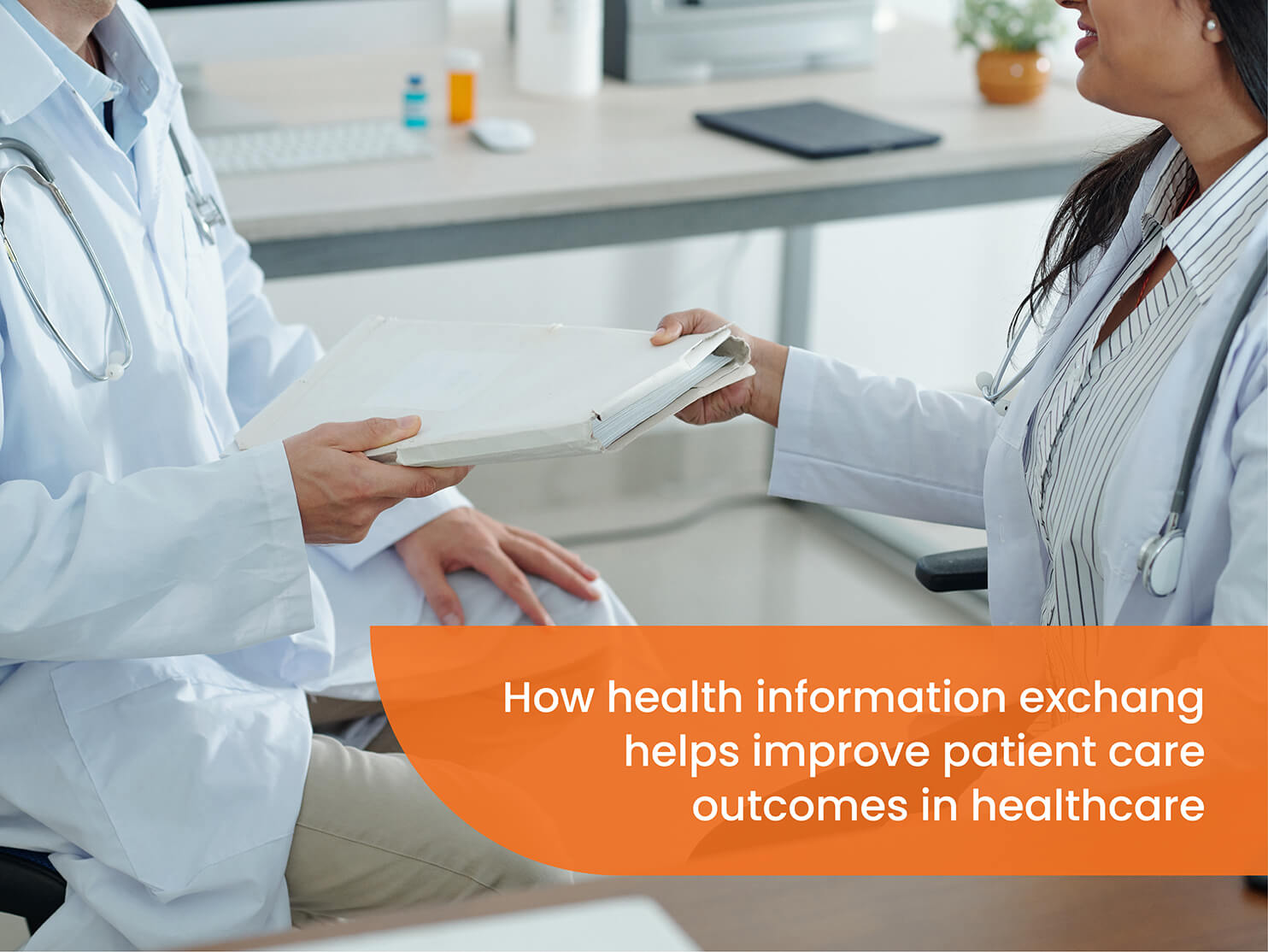How health information exchange helps improve patient care outcomes in healthcare

Advancements in technology continue to offer new possibilities for improving the quality of care provided to patients. Over the last decade, information technology has drastically changed the healthcare industry through data analytics, patient engagement solutions, electronic medical records, mobility solutions, and more.
The new paradigm shift from volume-based care to value-based care has given rise to the need for electronic health information exchange in the healthcare continuum. Because health information exchange helps care providers improve the quality of care and provide personalized experiences with a contextual understanding of every individual while reducing the care cost.
What is Health Information Exchange (HIE)?
HIE enables disparate departments of care practices and multiple branches of healthcare organizations to seamlessly share pivotal patient health information at the point of care in order to improve care quality, collaboration, and cost-effectiveness.
Benefits of Health Information Exchange
Health information exchange plays a crucial role in improving interoperability in the healthcare network. It will result in a significant impact on the patient's quality of care and the privacy of their health records. Seamless communication and coordination among providers help improve care and reduce costs. Furthermore, it enables informed decision-making about patient needs with quick access to a comprehensive view of each patient's information.
-
Improved access to complete patient health information
With easy access to patient health information in real-time, at the point of care, healthcare providers can build a comprehensive clinical picture of each patient and make more informed decisions regarding diagnostics and treatment plans for the patient.
-
Reduce errors in patient care
By having complete patient information available at the point of care, healthcare providers can get a clear understanding of the patient's needs and reduce medical and medication errors in the care delivery process to ensure patient safety.
-
Improves efficiency
Data is saved in digital format on the cloud, eliminating any need for paperwork. Furthermore, it reduces the risk of losing patient information as the data is securely stored in the cloud environment.
-
Enhanced collaborations and population health management
The health information exchange (HIE) allows providers to communicate and share information in a secure environment that improves patient care. By designing care around individual patients rather than a group of average patients based on the same disease, providers can lower healthcare costs, streamline clinical workflows, and improve the long-term health of the patient population.
-
Improves clinical decision-making
Health information exchange system provides real-time access to each patients’ health records and delivers meaningful insights at the point of care, enabling care providers to make data-driven decisions in order to foster each patients’ treatment plans.
-
Reduces cost
Health information exchange system digitally provides access to patient data across the continuum, which reduces the redundancies in clinical workflow and cuts down care and administrative costs around each patient.
Conclusion
The new patient care paradigm focuses entirely on personalized patient engagement. Healthcare organizations are adopting an evidence-based approach to patient care in order to compete in today's changing healthcare landscape and attract more patients.
With EHNOTE, healthcare practices can establish a fully-integrated care network in their healthcare organizations, which helps care providers to improve patient-centric care in order to manage their patient population more effectively and reduce costs in patient care.
Click here https://bit.ly/3ckSxIo to register for a free demo.
